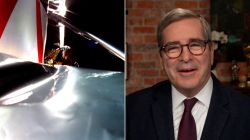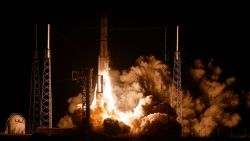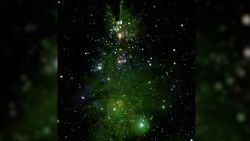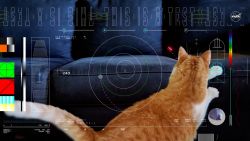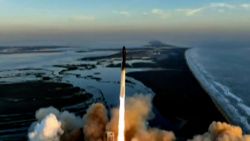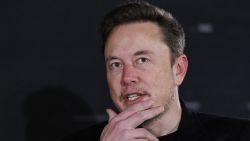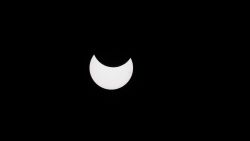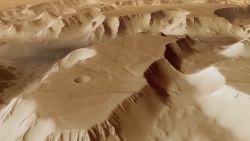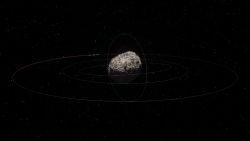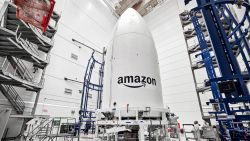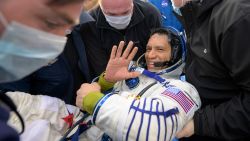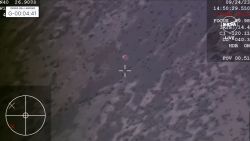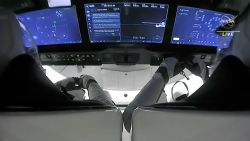A SpaceX Crew Dragon capsule carrying four astronauts roared into outer space atop a Falcon 9 rocket on Wednesday, marking the kick off of SpaceX’s fifth crewed mission to orbit.

The spacecraft, with three NASA astronauts and one European astronaut onboard, will spend all day Wednesday maneuvering closer to the International Space Station (ISS), where it’ll dock late Thursday kicking off a six-month science and research mission.
The astronauts will spend the next day strapped inside their spacecraft as it maneuvers through orbit and prepares to link up with the ISS, which orbits more than 200 miles above Earth’s surface.
Docking is scheduled for 7:10 pm ET Thursday.
This mission, called Crew-3, is the fourth mission in a partnership between SpaceX and NASA to make routine trips to the ISS in order to keep the 21-year-old space station adequately staffed. That’s something NASA has wanted to have more control over since its Space Shuttle program retired in 2011, leaving Russia as the only country with the ability to provide ISS transportation.
But SpaceX’s Crew Dragon is far from another space shuttle. The company still owns and operates the vehicle and NASA is considered just another customer for these missions.
In fact, the four professional astronauts on the Crew-3 mission —NASA’s Raja Chari, Tom Marshburn, and Kayla Barron, as well as the European Space Agency’s Matthias Maurer — will be the first to board a Crew Dragon since SpaceX’s Inspiration4 all-civilian tourist mission. That mission carried four people, none of whom were professional astronauts, on a three-day space flight that orbited higher than any spacecraft has traveled since the moon missions of the 1970s.
In a press conference earlier this week, NASA’s Commercial Crew Program manager described the Inspiration mission as a “gift” because it brought issues with a key component on the Crew Dragon spacecraft — the toilet — into the spotlight so the problem could be fixed for future NASA missions.
“The Inspiration4 crew were alerted to an issue with the onboard toilet’s fan, which is used to create suction that is necessary when going to the bathroom in microgravity. After the spacecraft returned home, SpaceX disassembled the capsule and found “contamination.”
“There’s a storage tank where the the urine goes to be stored [and] there’s a tube that came disconnected or came unglued,” said William Gerstenmaier, a former associate administrator at NASA who now works as SpaceX’s head of mission assurance, during a press conference last month. “That allowed urine essentially to not go into the storage tank, but essentially go into the fan system.”
The issue also prevented a group of astronauts from using their Crew Dragon spacecraft’s on-board toilet during their trek back to Earth from the International Space Station on Monday. The astronauts had found their capsule also had evidence of “contamination” from a leaky toilet, according to NASA. They were forced instead to rely on undergarments — essentially adult diapers — during their nine-hour return trip.
The Crew-3 launch comes after another group of four astronauts returned from the ISS on Monday, capping off the mission dubbed Crew-2.
Both of the flights came as SpaceX and NASA worked to troubleshoot issues with the design of the toilet onboard SpaceX’s Crew Dragon capsule. The issue left the Crew-2 astronauts without a bathroom option during their nine-hour return flight from the ISS on Monday.
NASA and SpaceX said the issue had been fixed on the capsule used to launch the Crew-3 mission Wednesday.
SpaceX had intended to launch this mission, called Crew-3, on Halloween, but liftoff was delayed because of some rough weather over the Atlantic Ocean that could’ve impacted rescue operations if the rocket were to misfire and force the astronauts to make an emergency splashdown landing in the ocean. Crew Dragon’s ability to jettison a crew to safety if something goes wrong is one of the reasons the space agency says it is among the safest spacecraft ever flown.
Such an emergency exit has never had to be carried out by SpaceX, but having that option — and ensuring a recovery could be smoothly executed — is one of the reasons the space agency says Crew Dragon is among the safest spacecraft ever flown.
The flight was then delayed further by a “medical issue involving one of the Crew-3 astronauts,” according to NASA. The issue was not a medical emergency nor was it Covid-related, the space agency said, though it declined to give further details.
Meet the Crew-3 astronauts
Kayla Barron, who has a a master’s degree in nuclear engineering from the University of Cambridge, was selected as a NASA astronaut in 2017 and comes directly from a field of work that involves extreme living conditions and long bouts of isolation: submarines. Barron became one of the first women ever to serve on a Navy submarine back in 2010.

“It wasn’t until I had that experience of living and working beneath the surface of the ocean and made the connection to living and working in the vacuum of space and understanding the kind of team it took to do that successfully,” Barron told reporters last month. “All those parallels are what gave me the confidence to…apply [for NASA’s astronaut corps] in the first place.”
Raja Chari also joined NASA’s astronaut corps in 2017 as one of its newest inductees, and marks his first flight to space. He has a master’s degree in aeronautics and astronautics from MIT and graduated from the US Naval Test Pilot School, which has a long history of providing a pipeline to the astronaut corps.
Chari and Barron have also both been selected for NASA’s corps of Artemis astronauts, who could fly on future missions to the Moon. Barron added that taking a trip to the ISS is “the best possible training for us” to prepare for an eventual lunar mission, “in terms of personal development and the opportunity to learn from experienced people.”
It’s also the first time in space for Germany’s Matthias Maurer of the ESA, who’ll have the opportunity to conduct a spacewalk and activate a new robotic arm, which was recently transported to the space station aboard a Russian spacecraft.
“This arm will be able to bring science payloads through an Russian airlock from the inside of the station towards the outside, and then we [will be] able to run experiments on the outside without performing a spacewalk,” he said.
The mission’s pilot, NASA’s Tom Marshburn, is the sole veteran astronaut among the crew. He has a background in physics and holds a doctorate of medicine, and he first joined NASA in the early 1990s as a flight surgeon. He joined the official astronaut corps in 2004 and has previously flown on one Space Shuttle mission and one Russian Soyuz mission to the ISS.
When asked what he’s most looking forward to, Marshburn told reporters that “certainly one of the pinnacles of your time up on board is having the opportunity to do a spacewalk, but what we’re doing day to day in the laboratory is going to be what many of us look forward to the most.”
The ISS has for two decades hosted astronauts from all over the world to conduct scientific research. The space station is unlike any laboratory in the world — in the microgravity environment, physical and biological phenomena aren’t bogged down by the Earth’s pull. So, doing the same experiment on the station that’s been done on the ground can give scientists a better fundamental understanding of how something works.
The research the Crew-3 astronauts will oversee includes an attempt to grow a “perfect crystal” to enhance our understanding of biological processes, a test of the impact of diet on astronaut health, and the testing of a smartphone video guidance sensor for guidance, navigation, and control of the Astrobee free-flying robot.



